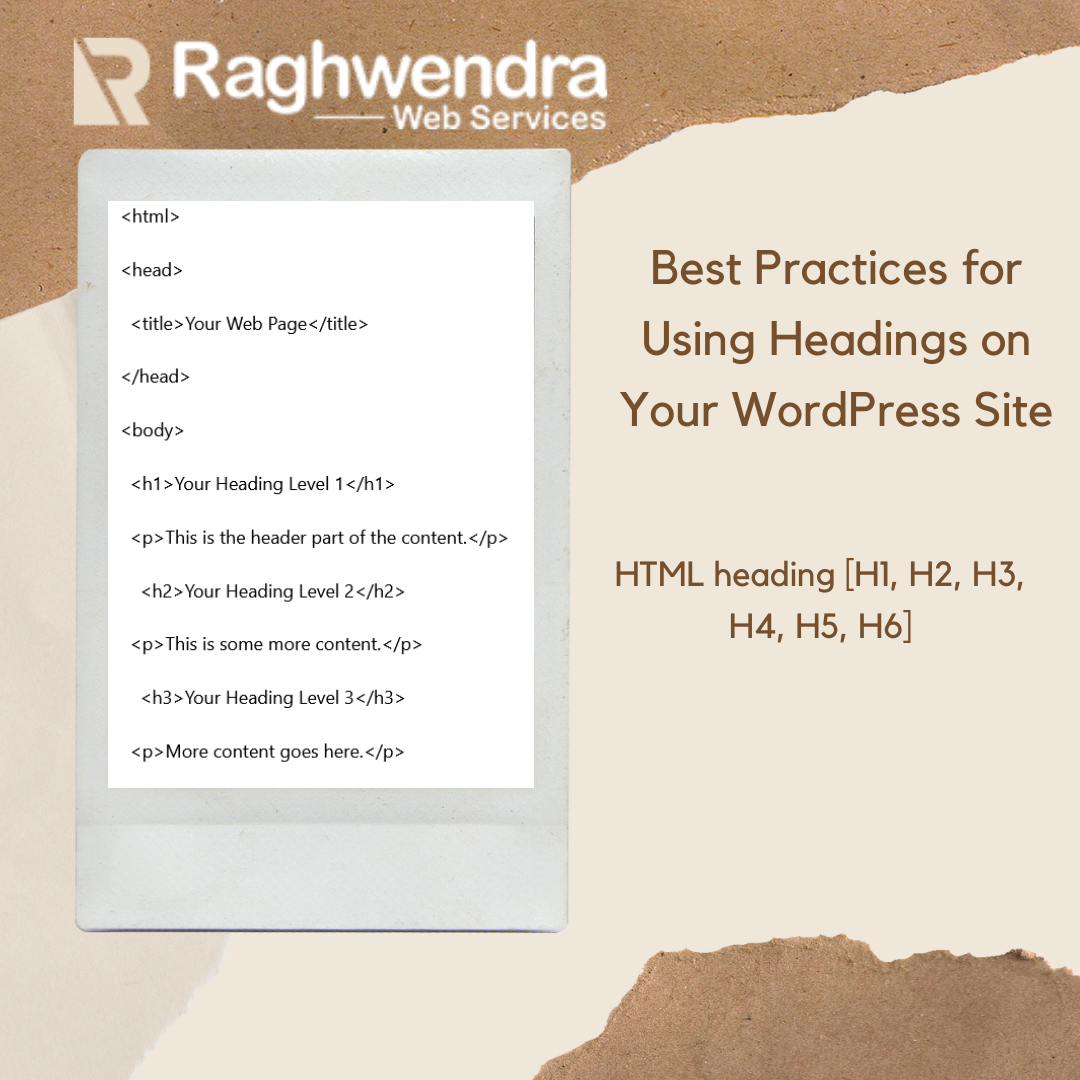
Titles play an important role when it comes to optimizing your WordPress site for search engines and enhancing the user experience. The major HTML heading tags are [H1, H2, H3, H4, H5, H6]. Properly structured and optimized titles not only improve the readability and reach of your content but also contribute to better Search Engine Optimization (SEO) rankings.
Headings help both search engines and visitors understand the hierarchy and organization of your content, making it easier to navigate and digest. In this article, we will explore best practices for using headings on your WordPress site, including how to choose the right heading tags, optimize them for SEO, and improve the overall user experience.
By following these guidelines, you can increase the SEO-friendliness of your website and ensure that your content is well-structured, engaging, and accessible to both search engines and your audience.
In HTML, heading tags represent different levels of headings, with the highest level and the lowest level. To properly sequence these heading tags in a web page, you must follow a hierarchical structure and use them in the proper order. Here’s an example:
Example of HTML Heading code
<!DOCTYPE html>
<html>
<head>
<title>Your Web Page</title>
</head>
<body>
<h1>Your Heading Level 1</h1>
<p>This is the header part of the content.</p>
<h2>Your Heading Level 2</h2>
<p>This is some more content.</p>
<h3>Your Heading Level 3</h3>
<p>More content goes here.</p>
<h4>Your Heading Level 4</h4>
<p>Even more content.</p>
<h5>Your Heading Level 5</h5>
<p>Additional content.</p>
<h6>Your Heading Level 6</h6>
<p>Final content.</p>
</body>
</html>
In this example, the heading tags are used in the correct order, representing a hierarchical structure. The content inside each title tag is indented for clarity, but the indentation is not required for correct rendering. You can modify the content within each tag to suit your specific needs.
Remember that it is good practice to use heading tags to provide a logical and structured hierarchy to your web page. Search engines and screen readers also rely on these tags to understand the content and present it appropriately to users.
It is important to note that the style (for example: font size, color, etc.) of headings is usually controlled with CSS rather than HTML tags.
Why does the order of HTML heading tags (H1, H2, H3, etc.) matter in SEO?
Title optimization or sequential HTML titles on a web page for WordPress play a role in search engine optimization (SEO). Here’s why sequential titles matter for SEO:
Content Structure: Search engines analyze the structure of a web page to understand its content. Sequential headings help search engines understand the organization of your content and its relevance to the overall topic. Using proper title hierarchy helps search engines determine the main topics and subtopics your page covers.
Keyword relevance: Sequential headings can include relevant keywords that describe the content of each section. By using keywords naturally in your titles, you provide search engines with additional context and improve your page’s visibility for those specific terms. This can have a positive effect on your ranking for relevant search queries.
User Experience: Sequential headings contribute to a better user experience by making your content more scannable and readable.
Visitors to your web pages can quickly understand the structure and hierarchy of the information presented, helping them to easily find the relevant sections
s. This improves engagement and reduces bounce rates, which can indirectly affect SEO rankings.
Accessibility: These technologies rely on the logical structure provided by headings to navigate and understand the content. Proper title hierarchy increases the accessibility of your web page and ensures that all users can consume your content effectively.
Featured Snippets: Sequential titles can increase the chances of your content appearing as a featured snippet in search engine results. Featured snippets provide short answers to user queries directly on the search results page.
In short, sequential HTML titles matter in SEO. Because they contribute to how search engines organize and understand your content. Improve user experience, aid in keyword relevance, increase reach, and potentially increase your chances of appearing as a snippet in search results.
![15 Things to consider when redesigning [revamp] a website website redesign services](https://www.raghwendra.com/blog/wp-content/uploads/2023/06/redesign-coporate-identity-150x150.jpg)
![Insert, Update, Delete in PHP MySQL example [GIT downloads] Insert, Update, Delete in PHP MySQL example [GIT downloads]](https://www.raghwendra.com/blog/wp-content/uploads/2021/10/header-post-blog-150x150.jpg)

